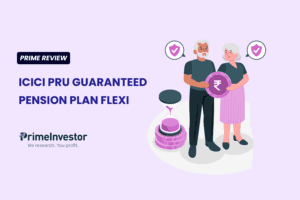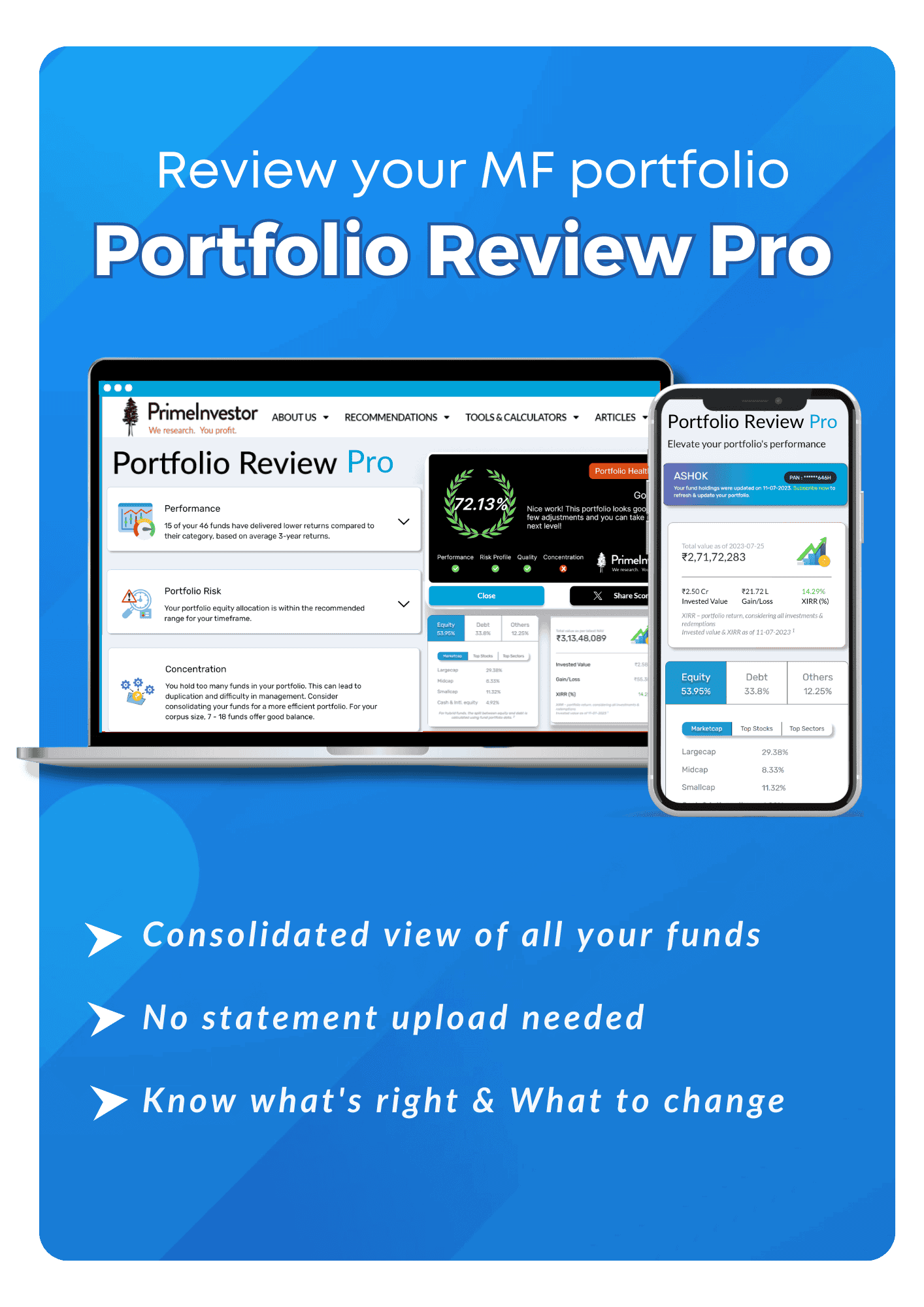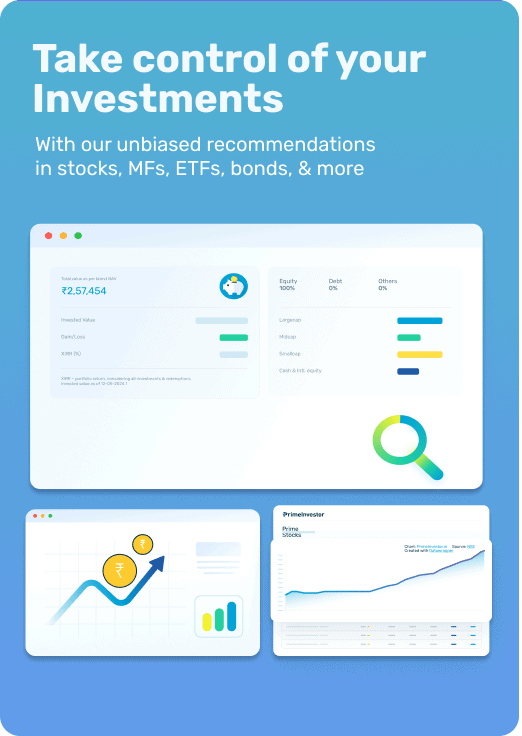After the Hindenburg bombshell tanked Adani stocks, the faith that some investors placed in index investing seems to have been shaken. With the Nifty 50 and Nifty Next 50 featuring seven Adani group stocks between them, PrimeInvestor received many queries soon after the news broke.
Should they immediately sell Nifty 50 and Nifty Next 50 funds and think of re-entering them after the Adani storm blew over? Why not switch out of these funds and invest in other index funds that have less weight to Adani stocks? Why didn’t the index providers act quickly to remove Adani stocks after governance concerns?
All these queries boil down to one thing. As an investor in an index fund, should you react to events that affect individual stocks in the index? Our short answer is – No, you shouldn’t. But there are other measures you can take to mitigate risk on your index fund choices. Here’s a FAQ.

Q. If there are negative events that impact index stocks in a big way, should I sell the index fund?
As an index fund investor, it is better not to react to events affecting individual stocks for three reasons.
# 1 Baked in: When allegations of fraud or negative events hit a company, stock prices usually react very swiftly, within a couple of trading sessions. By the time you decide to sell the fund, the bad news is very likely to be baked into the stock price. The market has a tendency to over-react to bad news (as well as good). So, if the event triggering the collapse proves to be short-lived or over-done, stock prices can even rebound from lows. In such a case, your selling would have converted paper losses on your index fund into real losses.
# 2 Dwindling weights: In some cases where governance concerns have been triggered or there’s a shift in how the market views a company’s prospects, an index stock can keep falling without reprieve. But even in such cases, losses in individual stocks seldom impact long-term returns from the index.
One of the key reasons why index investing based on market-cap based indices works in the long run, is its auto-correct mechanism. Indices like the Nifty 50 and Nifty Next 50 are designed to automatically add weights in rising stocks (stocks gaining market cap) and trim weight in those losing market cap. Stocks hit by large adverse events that suffer large value erosion eventually lose enough market cap, to exit the index. In fact, it is for this autopilot quality that many investors prefer market-cap based passive investing.
Considering Adani stocks, in January, before the Hindenburg controversy hit, the Nifty 50 featured two Adani stocks with a combined weight of about 2%. This effectively meant that even if the Adani stocks were to go to zero (which is quite unlikely), the maximum impact on the index funds would only be 2%. The event seemed more of a worry for investors in Nifty Next 50 funds because this index featured a 14% weight in Adani stocks (including ACC and Ambuja Cement acquired by the group). But with these stocks tanking by 25% to 71% since then, the weight of the Adani pack in the Nifty Next 50 now hovers at less than 10%.
The table below shows that while Adani group stocks in the Nifty50 fell by 29%-59% since January 24 (when the Hindenburg report was released), the Nifty50 has fallen by 3%. While the Adani stocks in Nifty Next50 fell by 25% to 79%, the Nifty Next50 lost 10% in this period. Part of this loss can also be attributed to a general market decline rather than Adani stocks alone. As time goes by, the Adani pack (if it continues to decline) is likely to have a steadily dwindling impact on the returns of both indices as their weights steadily decline.
#3 Limited long-run impact: When you choose to invest in a specific index fund over other options, you take the call based on its long-term performance record. This performance history is bound to include many mishaps like the one that has hit Adani stocks. Over the last 20 years, the Nifty 50 has hosted Satyam Computers - where the promoter admitted overnight to cooking the books, real estate titans like DLF and Unitech - which turned midgets in the crash of 2008 and infrastructure majors such as JP Associates - which eventually ended up as debt defaulters.
Each of these stocks has lost 80-90% of their peak value from the time they figured in the index. But the 20-year CAGR of 14% that you see on the Nifty 50 today, is after weathering all this. Accidents relating to governance issues, regulatory run-ins, adverse external events or corporate actions can impact not just index stocks, but any portfolio.
In fact, if you plan to monitor the individual stock exposures of the funds you own so closely and react to every event, you don’t need the services of a professional fund manager or a mutual fund. You may as well be a direct stock investor.
Q. But couldn’t I have avoided the 10% loss on Nifty Next 50 by selling my index funds the same day?
Even if you were lightning fast in your reactions and sold your Nifty Next50 fund on January 27, you would have had to deal with two further challenges. As staying out of the market for an extended period is never a good thing (a big bounce can happen anytime), you would need to have invested your redemption proceeds in an alternative index fund or active fund immediately.
Even delaying this for a week or two can mean missing out on a market up move. The choice of an alternative can be tricky. Adani or no Adani, there’s a chance that the new index may not perform as well as the older one in the long run. You would also have to pay capital gains tax on your redemption proceeds each time you sell a fund. This could well wipe out any ‘savings’ you make by avoiding stock-specific moves within the index.
Q. The severe de-rating of Adani stocks is also because many of them were trading at unrealistic three-digit PEs. There were always market apprehensions that these stocks have very limited public float. Why did the index providers include such stocks in the bellwether indices in the first place? Shouldn’t they have done more due diligence?
The broad market indices in India are not designed to consider any fundamental or governance factors. In broad market indices such as the Nifty 50 or Nifty Next 50, index providers use liquidity and market-cap as the only screeners to add or delete stocks. Criteria such as stock valuations, financial metrics, shareholder returns and even a company’s record on governance or regulatory compliance do not find a place in the screening criteria for market-cap based indices. For any new stock to be included in the Nifty 50, it has to meet only the following criteria:
- It should be part of the Nifty 100 and traded in the F&O segment. This means that it must be among the top 100 listed stocks when measured by the market cap available for trading.
- It should be traded on 100% of the days in the six months preceding the inclusion.
- It should have traded at an impact cost of 0.50% or less in the last six months.
- Its free-float adjusted market cap should be 1.5 times the average free float market cap of the smallest stock in the index.
It's clear from the above that fundamentals, valuations or governance factors play no role. India’s broad market indices are designed to simply house the most highly valued, actively traded and liquid stocks in the listed universe. Read more on the index selection methodology here. In fact, despite the Hindenburg allegations breaking out, NSE has recently announced that Adani Wilmar will be included in the Nifty Next 50 and Nifty 100 and that Adani Power will debut into Nifty 500 and Nifty Midcap 150 from March 31 this year.
Q. But if fundamental factors or valuations play no role in index construction, isn’t index investing risky?
If you thought index investing is risk-free, it isn’t. In short, the risks can be:
- Indices can have portfolios concentrated in specific sectors (like financials) or business groups (like the Adanis, or the Tatas).
- Their constituents can carry business or governance risks.
- As they essentially follow a momentum strategy (of adding winners and dumping losers), they can suffer reversals when there’s a material trend reversal in the markets.
- They do not shield you from market volatility. The Nifty Next 50 is in fact among the more volatile indices given its penchant for high valuation as well as high momentum stocks.
We had highlighted some of the risks of index investing in this earlier article, in detail. But then, many of these risks can also apply to active funds. In the long run, it is the low-cost advantage and the auto-correct mechanism of index funds (and not stock selection) that helps them deliver reasonable results.
However, if you are a staunch believer in fundamental investing, your long-term portfolio should feature a mix of good active funds with index products, so that you have a good mix of the momentum and valuation/fundamentals-based styles. As broad market indices in India are based on momentum, having value or contrarian funds in the mix can deliver good results.
Q. Can I make index fund choices that reduce the above risks, even if they don’t eliminate them?
Yes, you can. If you are a fundamental investor who would like to apply some basic checks to the index you’re buying, you can compare four metrics before choosing an index fund: Sector concentration, portfolio weights in top 5/10 stocks, portfolio PE and portfolio Price-to-Book Value. The relevant information is available in the monthly index factsheets published by NSE.
Running these checks on three key broad market indices for end-January 2023, for instance, you get the table below. This shows that while the Nifty 50 and Nifty 100 are fairly heavily concentrated in financials. The Nifty Next 50 owns a more diversified portfolio but has a higher inclination towards high PE stocks.
Do note that all these metrics can and will change as index constituents are reshuffled in future. This is why the ultimate test of whether an index fund should find a place in your portfolio should lie in its long-term performance and volatility metrics.
It is for the above reasons that at PrimeInvestor, we did not react immediately to the Adani saga and its impact on the index funds. We believe the call is more about whether an index is performing consistently and whether its portfolio fits your requirement.
We think it would be better for your index fund choices to be guided by the fund’s rolling return record over recent and long periods, upside and downside capture ratios, volatility and other metrics. This is apart from fund specific factors such as tracking difference and expense ratio.
When PrimeInvestor selects index funds for its passive recommendations, it puts them through precisely such screeners. If you do not want to go to all this trouble, you can always use PrimeInvestor’s readymade list of best passive funds which is updated every quarter.
Look out for our more detailed analysis soon on the Nifty Next 50. It will provide a detailed analysis on its portfolio construction and churn, how it compares with the Nifty 50 and Nifty Midcap 150 and of course our view on whether the Next 50 is an investment-worthy index.








13 thoughts on “Adani stocks and index funds: cause for concern?”
Excellent analysis. How I wish , all Lecturers and Professors analyse and explain key concepts like this.
Thank you!
Hi is there any ETF/index fund based on NIfty smallcap 50 and NIfty midcap select?
There are HDFC and Motilal Oswal ETFs based on Nifty Midcap 100, Midcap 150 and Smallcap 250. Not seen one based on smallcap 50.
NICE analysis.Could you please also provide upside and downside capture ratio metrics in mutual fund screener. and what about Adani group companies in debt funds .There if a company defaults there is no recovery of loss?
It’s true that debt funds holding Adani bonds will take a hit if there’s a default. But so far the group has no history of default and has been honouring all obligations
Thank you Aarati Krishnan for detailed analysis. Reminded of phrase “Idhuvum kadanthu Pogum” as the index has already weathered multiple storms already.
On a side note, recommended stock folio (7+) balance is skewed due to drop in NN50. Is it a good time to top up and rebalance the portfolio?
Thanks. Not sure what you’re referring to, but we have recommended Bank Nifty and not Next50 in stock portfolio…yes many stocks are close to our buy levels and do merit averaging.
Specifically I am referring to https://www.primeinvestor.in/prime-portfolio-details/?id=15 , Timeframe > 7 years.
For me the NN50 is off nearly by a percent from ideal asset allocation. Hence wanted to check if we can do some selective purchase to bring back to recommended 10%
We’ll be issuing a call on what to do with the Next 50, both in Prime Funds and in the portfolios, so do wait for it. – thanks, Bhavana
As always thanks Aarati, Bhavna and team for this insight.
Regarding the commentary on Next 50, will that be posted sometime soon or will it be part of next Prime Funds quarterly review (sometime in April) ? Sorry for rushing, just eager to hear your views as this is more relevant to my context.
Thanks
~ thiyagu
Well before quarterly review. Likely by next week. thanks, Vidya
Good analysis
Comments are closed.